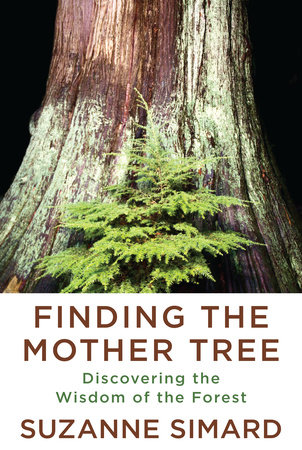Plants Help Each Other. Are They Self-Aware? Can They Suffer?
Recent discoveries that plants can do many things that we used to think only animals could do raise some interesting questionsIn recent decades, we have learned that plants are much more like animals in their use of information than earlier thought. They have nervous systems that use glutamate to speed transmission, as mammals do. And seeking to thrive and grow, they communicate extensively. Recently, environmental journalist Richard Schiffman interviewed forest ecologist Suzanne Simard, author of the just-released Finding the Mother Tree on the intelligence of trees:

You also found that birches give sugars to fir trees in the summer through the mycorrhizal networks and that firs return the favor by sending food to birches in the spring and fall, when the birches lack leaves.
Isn’t that cool? Some scientists were having trouble with this: Why would a tree send photosynthetic sugars to another species? And to me, that was so obvious. They are all helping one another to create a healthy community that is of benefit to everyone.
Richard Schiffman, “‘Mother Trees’ Are Intelligent: They Learn and Remember” at Scientific American (May 4, 2021)
Simard is referring to the belief among evolutionary biologists that a life form only ever seeks to benefit itself or another member of its own species, which shares its genes (Richard Dawkins’s selfish gene concept). By contrast, plants form communities that transform an environment into an ecology that depends on all members. That’s made easier by the fact that plants can manufacture food directly from chemicals.
And intelligence?:
Your use of the word “intelligent” to describe trees is controversial. But it seems like you are making an even more radical assertion—that there is an “intelligence” in the ecosystem as a whole.
You used the word “controversial.” That comes from me using a human term to describe a highly evolved system that works, that actually has structures that are very similar to our brain. They are not brains, yet they have all the characteristics of intelligence: the behaviors, the responses, the perceptions, the learning, the archiving of memory. And what is being sent through those networks are [chemicals] like glutamate, which is an amino acid that also serves as a neurotransmitter in our brain. I call the system “intelligent” because it is the most analogous word that I can find in the English language to describe what I am seeing.
Richard Schiffman, “‘Mother Trees’ Are Intelligent: They Learn and Remember” at Scientific American (May 4, 2021)
The idea of intelligence in nature is controversial because nature is now known to be so full of active information that many question the claim that it could all have evolved by chance, as many prominent biologists believe.
A more questionable idea, not raised by Simard, is that plants have “minds” but that may be based on a misconception. For example, plants do many things that we used to think only animals could do. Those things include memory (chemical information stored in plant cells) and habituation (adapting to a stress that is not harmful) — and even “screaming.”
An open-access study found recently that plants “scream” under stress — but ultrasonically. Humans can’t hear it but life forms that hear within that range probably can:
The number of sounds emitted by drought-stressed plants was about 35 and 11 per hour for tomato and tobacco, respectively, and cut tomato and tobacco plants emitted about 25 and 15 sounds per hour, respectively.
In contrast, the number of sounds emitted by plants from all the control groups was lower than one per hour.
Sergio Prostak, “Plants Produce Ultrasonic Clicks under Stress” at Sci-News (December 9, 2019)
Plants also warn other plants of danger. One variety of the sweet potato (Tainong 57) releases a chemical, DMNT, when leaves are attacked by insects. That causes other leaves to form a substance called “sporamin” that attacks the insects’ digestive systems. The signal, picked up by Tainong 57s nearby, triggers them to release the same chemical. The paper is open access.

But none of these activities requires a mind. For example, Schiffman’s interview with Simard gives some idea of how plant memory works:
Some people challenge your use of words like “memory.” What evidence do we have that trees are actually “remembering” what happened to them?
The memory of past events is stored in the tree rings and in DNA of the seeds. The width and density of the tree rings, as well as the natural abundance of certain isotopes, holds the memories of growing conditions of previous years, such as whether it was a wet or dry year, or whether there were nearby trees, or if they had blown over, creating more space for the trees to grow faster. In the seeds, the DNA evolves through mutations, as well as epigenetics, reflecting genetic adaptations to changing environmental conditions.
Richard Schiffman, “‘Mother Trees’ Are Intelligent: They Learn and Remember” at Scientific American (May 4, 2021)
In short, these systems are exquisitely complex but we should not assume that a consciousness is experiencing them — and that is what we mean by a “mind.” Philosopher Thomas Nagel pointed out that, to say that a bat is conscious, we must assume that there is something that it “is like” to be a bat. Or a dog or a cat or a chimpanzee. But, as plant scientists have pointed out, there is no reason to believe that plants are conscious in the sense that there is something that it “is like” to be lettuce — however complex lettuce ecology may prove to be.
There is a pop culture element to some responses to new findings about plant communications that we should view with caution. Plant activist Laura Ruggles labels those of us who don’t concede, essentially, that plants are people too“ as guilty of plant blindness” and “zoochauvinism.” But the new findings, while astonishing, do not provide a reason to believe that salad is murder.
Rather, they underline the fact that information is immaterial; if we are not looking, we don’t see it. But information, as such, doesn’t imply individual consciousness, suffering, or individuality. All such claims must be argued from other evidence.
You may also wish to read: Can insects, bacteria, and plants have personalities, too? If personality amounts simply to observed individual differences in behavior, the answer is yes, though the issues are more complex for plants.
